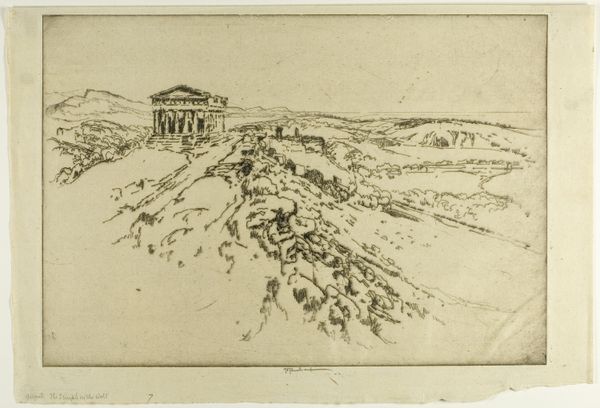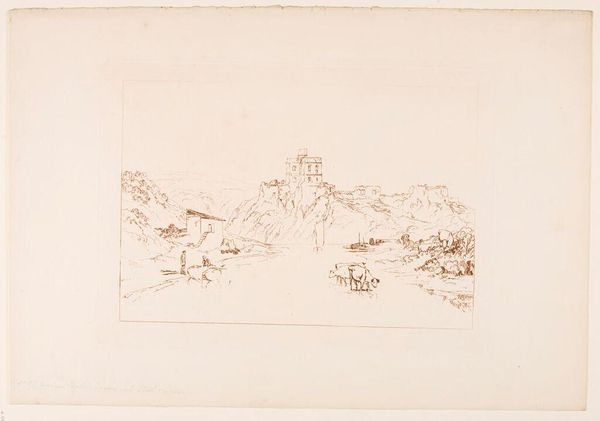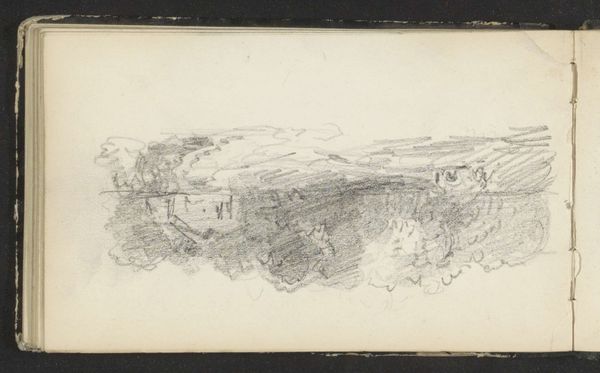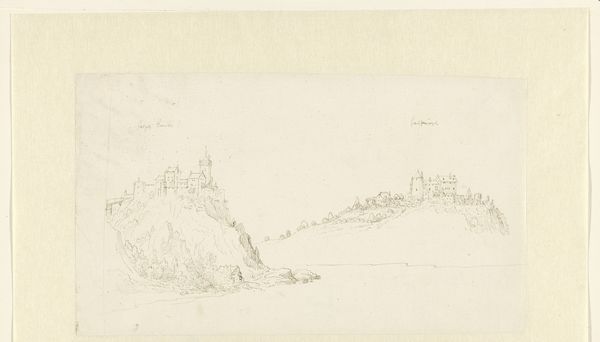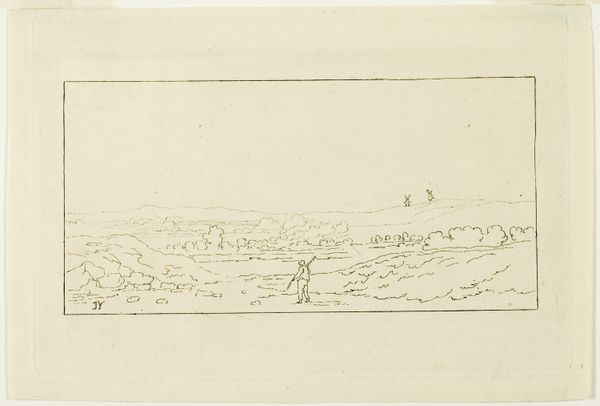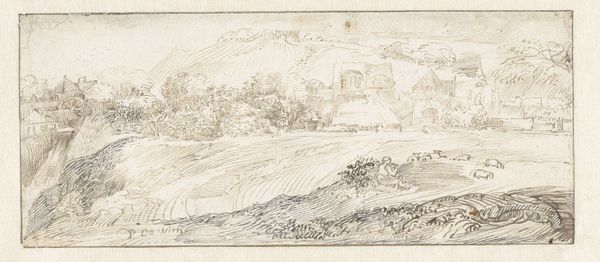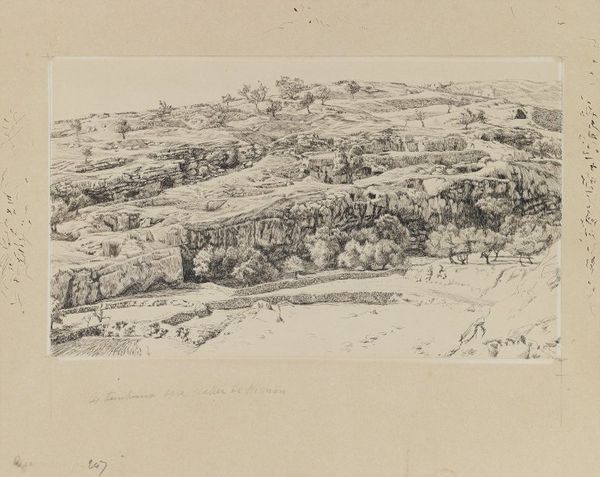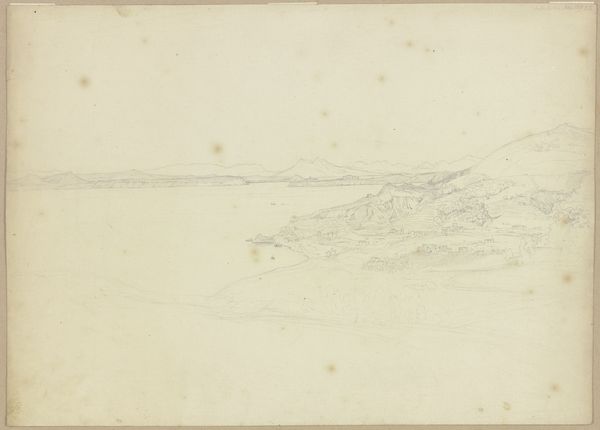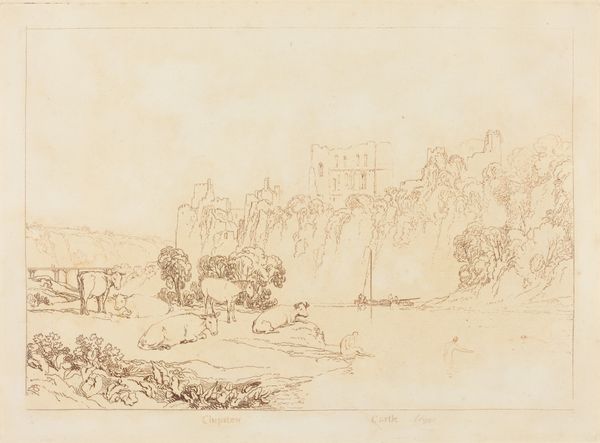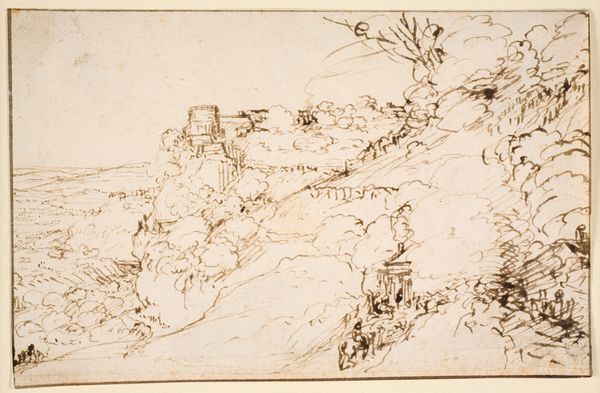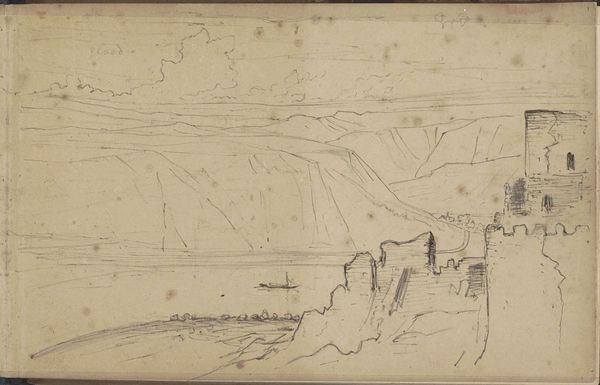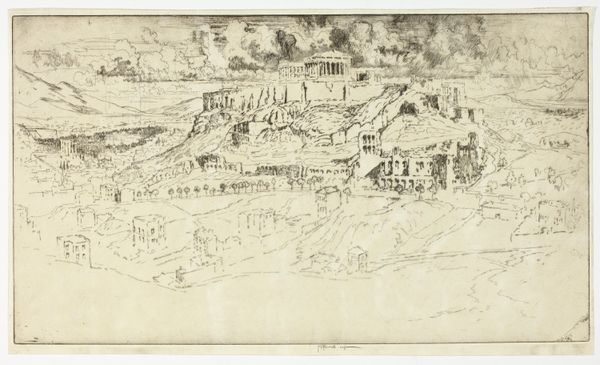
drawing, print, etching, paper
#
drawing
# print
#
etching
#
landscape
#
etching
#
paper
#
cityscape
#
realism
Dimensions: 263 × 375 mm (image); 298 × 446 mm (sheet)
Copyright: Public Domain
Editor: This is Joseph Pennell's 1913 etching, "The Acropolis from the Observatory." It's fascinating, this cityscape rendered with such delicate lines on paper. I'm struck by the sheer labor involved in creating this level of detail using etching. What are your thoughts on the relationship between the artist's process and the final image we see? Curator: For me, the power of this etching lies in understanding its means of production. Pennell chose etching, a printmaking technique reliant on acid and labor, to depict the Acropolis, a site laden with historical and cultural significance. He's not just showing us a romantic ruin; he's engaging with the historical context of the print medium itself, and by extension, with how such images were disseminated and consumed in the early 20th century. What do you make of his decision to include sheep in the foreground? Editor: That's a good point. I hadn't considered how the printmaking process connects to the image's accessibility. The sheep, though… maybe it’s his way of grounding the monument in everyday life? Perhaps it challenges the idea of the Acropolis as an untouchable, idealized symbol? Curator: Exactly. It’s about juxtaposing the monumental with the mundane. Etching allows for the mass production of this "view," turning it into a commodity. Pennell is asking us to think about what it means to "own" a piece of history, not through conquest or archaeology, but through consumption. The sheep and the lone shepherd bring attention to a simple mode of production that contrasts sharply with the industrial age surrounding Pennell’s time, inviting considerations on social labor. Editor: So, it's not just a pretty picture of a famous landmark. It’s a comment on labor, materials, and how we engage with cultural heritage. Curator: Precisely. By examining the materiality of the print itself, and by considering the historical and social context in which it was produced and circulated, we gain a much deeper appreciation for its meaning and its enduring relevance. Editor: I definitely see the work in a new light now. Thinking about the materials and social context opens up so much more than just the image itself. Curator: And that's the beauty of approaching art from a materialist perspective. It brings us closer to understanding the complexities of artistic production and its role in shaping our understanding of the world.
Comments
No comments
Be the first to comment and join the conversation on the ultimate creative platform.
